Natural Environment Enhancement and Protection
Our work to protect and enhance priority habitats and species and key landscape features remains a cornerstone of the Trust’s operations. A particular focus in recent years has been on the high Mournes, involving both mitigating key threats and actively enhancing the condition of the priority habitats therein. Detail is provided below on both our wildfire control and ‘Healthy Heathland’ initiatives which have pioneered landscape management techniques not previously extensively used in the Mournes and, in some cases, in Northern Ireland. But, as we also outline below, it has not all been about the high Mournes with red squirrels, native woodlands and other aspects of our rich lowland ecology, benefitting from the efforts of our staff and volunteers.
Healthy Heathland
This initiative saw the MHT Countryside team working closely with our Landscape Partnership officers to implement comprehensive management plans for key sites, selected for their potential to ‘test’ – and thus help us refine – approaches to move beyond simply arresting key threats like wildfire and erosion to actively restore priority upland habitat.
Early in the year site visits and demonstration work with experts from Moors for the Future in Yorkshire enabled us not only to consider site specific approaches but to involve a range of stakeholders in some very constructive debates. This informed detailed specifications for both machine and hand works at the col between Slieve Binnian/Slieve Lamagan and on sites adjacent to Binnian Lough. Contractors worked alongside our team to re-profile peat faces and emplace Geojute netting at the base of slopes and to position coir rolls on site to slow the movement of water and prevent peat washing through. Construction of stone dams complemented these interventions in places. Work also continued at previously treated locations such as the heath adjacent to the Silent Valley boardwalk and included sward turning to regenerate heather and the removal of non-heathland species.
Attention then turned to post project refinement works and monitoring carried out by MHT staff, including liaison with Trinity College Dublin and fixed point photography re ongoing monitoring through a European project. Tenders for helicoptering material and for further contract works for works at Lamagan col, over a 3ha site, and Binnian Lough, over approximately 5ha were developed and issued while scoping of possible sites for the next phase of works was carried out.
An important development, after liaison with NI Environment Agency (CDP), NI Water and the Mourne water catchment grazing contractor, was agreement to introduce grazing by cattle at key sites, particularly to control the regrowth of molinia grasses and thus create optimum conditions for heathland regeneration. Galloway cattle were introduced on a 10 hectare site at Ben Crom and sites at Bloody Bridge totalling 6 hectares.
Wildfire Control
Having pioneered (a Northern Ireland first) controlled burns in each of the previous two years, plans to further progress this method of removal of fuel load at key points in 2016/17 were undone by the weather and postponed until early in the new financial year. However, fuel load was further reduced at the Bloody Bridge lower control point with the mulching of gorse across 2.5 ha and preparatory site works completed to facilitate controlled burns in April 2017.
Monitoring work at previously treated sites continued, this year trialling a template developed by our colleagues in Belfast Hills Partnership. Site works were also completed to increase the capacity and utility of our Mourne Wildfire Training Area at the Silent Valley depot which was made available to for training sessions to Northern Ireland Fire and Rescue Service.
We also continued to input to the strategic development of approaches to wildfire control beyond our own locale. As well an Ireland-wide wildfire monitoring workshop and advice to NIEA on specialist wildfire equipment, we gave input to an international wildfire conference in Barcelona and facilitated site visits for, respectively, an international wildfire investigation workshop and for a fact finding visit by Dutch experts and Parks and Wildlife Service of the Ireland.
Recognition is increasing internationally of the heightened threat of wildfire arising from climate change and shifting patterns of land use. We are pleased to be able to say that incidents of wildfire in the Mourne AONB in the last year have been relatively small in number and scale. However, events both on and beyond these shores show that we cannot be complacent about this threat. In addition, the work to reduce wildfire threat also aligns closely with our healthy heathland work, with the controlled burning of invasive vegetation often a first step to heathland recovery and we look forward to further developing these approaches in tandem.
Trees for Mourne
The aim for the Trees for Mourne project is to increase the percentage land cover of native woodland within the Mourne AONB. (Our Biodiversity Action Plan highlights that there was less than 3% native broadleaf woodland). Increasing the area of native woodland helps many other species including, buzzards, barn owls, red squirrels and the rare pine marten. We were delighted this year to receive an award from the Northern Ireland Environment Agency Challenge Fund for native woodland expansion and establishment that enabled us to build on the knowledge gained from the small scale planting undertaken in recent years and to capitalise of the burgeoning stock in our tree nursery. As a result 650 trees were planted on a 5 hectare area at Aughrim Hill near Kilkeel, a further 100 at a 1.2 hectare site at Banns Road near Attical and 200 trees at Glasdrumman.
The Aughrim site is made up of unimproved grassland and scrubland with a few scots pine and mature oak scattered across. The hill is also very exposed to strong winds and so most of the trees, primarily oak and hazel, were planted on a south facing slope. Works also included preparing the ground and inserting posts for future planting of scot’s pine and rowan at the higher elevations.
At Banns Road the area planted is made up of both pastoral land and rough moorland on largely wet peaty soil around the Yellow Water river valley. Part of the site runs alongside the Eastern Mournes Area of Special Scientific Interest and planting was excluded from this particular boundary planted at this stage to ensure that the correct species were used to avoid the risk of unwanted species being seeded into the ASSI. The Glasdrumman site is primarily pastoral, cattle grazing land with significant wet boggy areas which were ideal for willow. We also carried out remedial works to sites at Whitehill, near Leitrim, and Tullyree, near Bryansford, including removing stakes and fitting plastic mesh to trees which were planted between 5 and 7 years ago.
It is an objective of the scheme that the increase in woodland cover does not impact upon the agricultural and economic viability of the land, so design and installation of appropriate sheep and cattle guards was an element of the work at all sites. The sites will in time be an additional habitat for birds of prey that in the Mourne plain and southern foothills, including peregrines and buzzards. Given Aughrim Hill’s close proximity to Mourne Park, the planting of this site can also act as a wildlife corridor and potentially increase red squirrel spread and numbers.
A key objective of the Challenge Fund element of Trees for Mourne was to involve volunteers. Tasks they contributed to included digging the trees out of the nursery, categorising into species type and size and pruning to an appropriate shape in order to fit them into the livestock guards. On planting days, we provided volunteers the opportunity to complete a course accredited by The Conservation Volunteers and this was particularly well attended by those who are currently unemployed and by adults with learning difficulties. We hosted two “Turn up and Try” volunteer open days organised by Volunteer Now to engage a wider cross section of community participation and these proved popular with some of the local ‘Men’s Sheds’. Overall 50 different individuals provided 20 volunteer days and assisted in the planting of over 200 trees and with digging out and preparing approximately 500 trees.
We are also pleased to report that, given many of the trees planted on our earlier trial sites are in areas exposed to the elements, some have confounded expectations in how well they have grown. We are trialling a monitoring system using GPS and GIS to monitor how well trees survive in differing environments and to find out which trees are most successful under Mourne conditions in, for example, wet areas or dry areas. We are also making preparations to diversify as regards the species of tree which we grow and, working alongside the Woodland Trust, we aim to have scots pine, birch and rowan to add to our nursery stock.
Saving Mourne Juniper
Again working in close collaboration with our Mourne Mountains Landscape Partnership, monitoring of the recent planting of 100 juniper specimens at three quarry sites around Drinneevar and Thomas’ Mountain revealed a good degree of success and we continued to care for nursery propagated seedlings to provide future supply. A key next step in development of our Mourne juniper programme is moving from propagation by cuttings to propagation by berries. Using our database of the established specimens in the landscape, we anxiously monitored berry production and with many remaining green for a significant time we began to consider that propagation from seeds was unlikely to be feasible. However in early spring some ripe berries were identified and permission obtained from NI Environment Agency to pick and use a number of these. Seeds were subsequently stratified - i.e. placed in a heat and cold in incubator to replicate the passing of several seasons - and a new propagation bed was established at our Dunnywater nursery. Cuttings were also taken as planned and we are pleased to note that previously unrecorded specimens – a possible future seed source – were identified at the Annalong buttress area.
Engaging and Celebrating Volunteers
This year saw something of the end of an era in relation to our volunteer activity. The Active Lifestyles Programme, which had been supported primarily by BIG Lottery funding for the best part of a decade, reached the end of its second major tranche of funding in November 2016. With input from an expert consultant we completed both an evaluation of the impacts of the funding to date and an Active Lifestyles sustainability plan. While developing the detail of some of the options for future activity emerging form this work, we were successful with applications to both the Baily Thomas Foundation and the Halifax Foundation for ‘gap’ funding to sustain the volunteering activity with particular special needs groups. We also continue to collaboration with several organisations including Volunteer NOW, Business in the Community and The Conservation Volunteers to deliver training and events. These measures allow us to retain the staff capacity and relationships built up while we finalise bids for more significant long term funding to be submitted in 2018. In total 820 environmental work days were achieved from February 2016 to February 2017 across all target groups, representing a value of over £40,000 worth of labour to AONB management.
We celebrated the input of all our volunteers at our annual Mourne Natural Heritage Awards ceremony. This year the recipient of the individual ward was stalwart member of our volunteer path team, Alan Dawson, who contributes regularly throughout the seasons with never wavering enthusiasm, whatever the weather. The group award recognised the contribution of Citibank who have been bringing staff to the Mournes for some years undertaking approximately 10 volunteer sessions annually, in activities that include beach cleans, heathland restoration, path work, litter picks, dry stone walling, tree planting and clearing invasive species. With from 12 to 30 people attending each session, this represents a significant collective effort towards conservation and environmental improvement.
Conservation and Awareness Raising through Partnership
A key element of our natural heritage work is to raise awareness of special landscape qualities and biodiversity. Much of this work in the year past was carried out in partnership with our own Mourne Mountains Landscape Partnership as well as with other environmental NGOs and local groups. The list below illustrates some highlights of this AONB wide work.
- Liaison with Ulster Wildlife Trust and other partners on implementation of Interreg (EU funded) red squirrel project. Includes assistance with recruitment and operations for Red Squirrel officer in South Down, provision of equipment, maintenance of feeders and cameras and squirrel monitoring
- Coastal/Woodland species identification swatches finalised for production in consultation with NIEA
- Kilbroney Park Tree Trail designed in consultation with local community
- Final phase of wildlife gardening courses completed in conjunction with The Conservation Volunteers
- Continued development of community apiary at Dunnywater
- Second and third level student placements developing skills in practical conservation techniques, wildlife ID etc.
- Advice and input – as project partner – to RSPBs ‘RKites’ (Red Kite) project development and successful funding application
- Programme of guided biodiversity walks including red squirrel walk in conjunction with Tollymore Red Squirrel Group, seaside and forests foraging events in conjunction with Forage Ireland, uplands habitat walk
- Youth Ranger programme involving 6 young people for 6 sessions across the summer delivering environmental knowledge and teaching practical conservation techniques
- Further planting of heathers at mini-Mourne heathland garden in Silent Valley Accredited hedge laying course
- Geodiversity talks
- Support to ‘Love Your Lough’ group on coastal litter lifts and at coastal biodiversity awareness event
- Conservation orientated tasks - e.g. dry stone walling, heathland restoration, bracken bashing - with Prince’s Trust and NI Youth Walkers
- Provision of volunteers for Big Butterfly Count Northern Ireland with British Trust for Ornithology
- Wildlife Gardening Stand at Balmoral Show in partnership with Butterfly Conservation
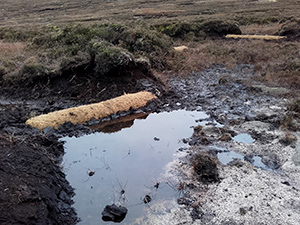
Coir rolls assisting heathland recovery
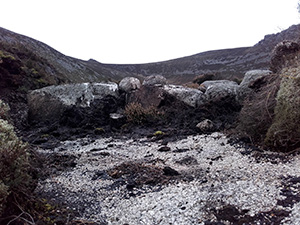
Stone dam built as part of our healthy heathland project
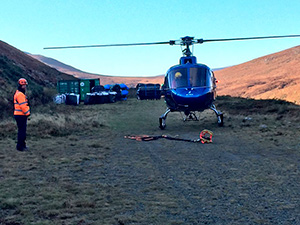
Helicopter preparing to lift heathland materials to high Mournes
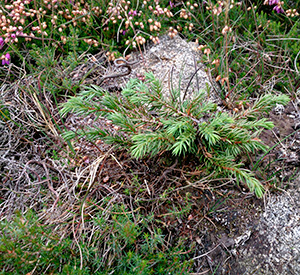
Mourne juniper and heather
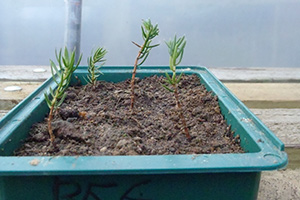
Propagating the genetically distinct Mourne juniper
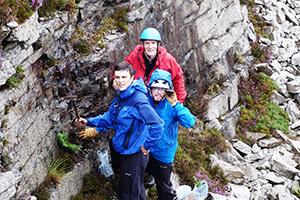
Planting out juniper specimens
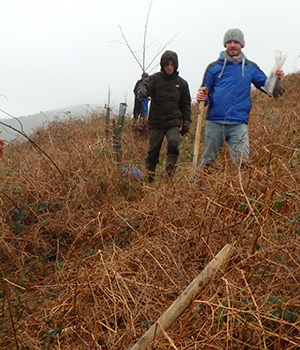
Establishing native woodland
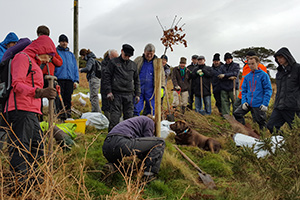
Tree planting with Men’s Shed groups
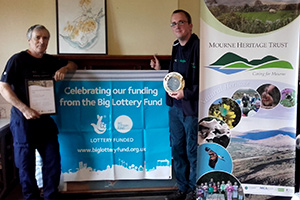
Celebrating a decade of support to volunteering from BIG Lottery
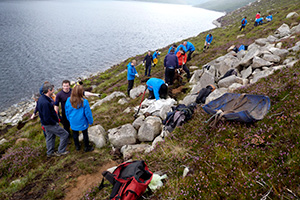
Volunteer path repair event
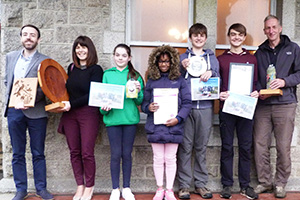
Mourne Natural Heritage Award recipients
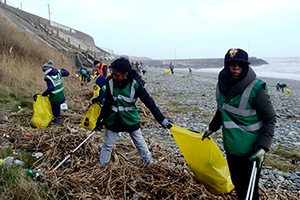
Coastal litter lift
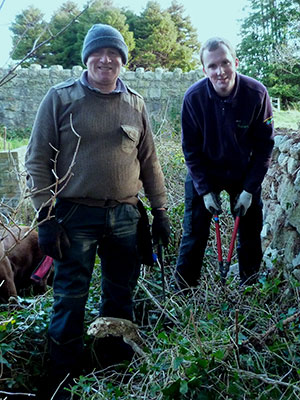
Volunteers Tony and Gareth clearing space for expansion at our Dunnywater nursery
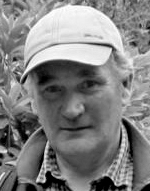 Welcome to the Annual Report of Mourne Heritage Trust for 2016/17 marking the 20th anniversary of the Trust’s foundation in 1997. Along with four of my present colleagues – Isabel Hood, Maureen Killen, William John Martin and Arthur Mitchell - it has been my privilege to have served on the Board since the very beginning. In addition, a number of current members have served for almost as long while others whose tenure has ended also contributed across many of these years. Throughout, we enjoyed a continuous refreshing of our membership with representatives from sectors including local government, community development, environment, agriculture and tourism to name just a few. This reflects the combination of continuity and change that characterises my memories of the how the Trust has evolved – a combination that is also seen in the landscape of the Mourne Area of Outstanding Beauty that it is our mission to care for.
Welcome to the Annual Report of Mourne Heritage Trust for 2016/17 marking the 20th anniversary of the Trust’s foundation in 1997. Along with four of my present colleagues – Isabel Hood, Maureen Killen, William John Martin and Arthur Mitchell - it has been my privilege to have served on the Board since the very beginning. In addition, a number of current members have served for almost as long while others whose tenure has ended also contributed across many of these years. Throughout, we enjoyed a continuous refreshing of our membership with representatives from sectors including local government, community development, environment, agriculture and tourism to name just a few. This reflects the combination of continuity and change that characterises my memories of the how the Trust has evolved – a combination that is also seen in the landscape of the Mourne Area of Outstanding Beauty that it is our mission to care for.
































































